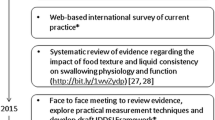Abstract
Food insecurity is a serious health concern among children in the United States with 15.3 million children living in food insecure households. The American Academy of Pediatrics recommends that pediatricians screen for food insecurity at health maintenance visits as identifying children at risk is a crucial step in the amelioration of food insecurity. Two surveys were administered in a Midwest pediatric clinic. A cross-sectional survey was electronically distributed to pediatric providers to assess perceptions of food insecurity among patients, provider readiness to conduct food security screenings, and barriers to conducting those screenings. A cross-sectional caregiver survey was administered to assess demographics, household food security status, participation in nutrition assistance programs, and barriers to getting enough food to eat. Descriptive statistics and odds ratios were calculated. Eighty-eight percent of physicians believe that food insecurity is a challenge for some of their patients. Only 15 % of providers reported screening for food insecurity, while 80 % were willing to screen. Physicians were most concerned with knowing how to handle a positive screen. Among caregivers, 57 % screened positive for food insecurity. Those experiencing food insecurity were more likely to be non-white, participate in SNAP and to feel discomfort towards the idea of talking to a doctor or nurse about food needs. Caregivers reporting food insecurity were significantly less likely to have a personal vehicle. Effective food insecurity screening requires addressing caregiver and health provider barriers in order to increase the likelihood of identifying households most at risk.


Similar content being viewed by others
References
Nord, M. (2009). Food insecurity in households with children: Prevalence, severity, and household characteristics. Economic Information Bulletin Number 56, US Department of Agriculture.
Coleman-Jensen, A., Gregory, C., & Singh, A. (2015). Household food security in the United States in 2014. USDA-ERS Economic Research Report.
Kleinman, R. E., Murphy, J. M., Little, M., et al. (1998). Hunger in children in the United States: Potential behavioral and emotional correlates. Pediatrics, 101(1), e3.
Alaimo, K., Olson, C. M., & Frongillo, E. A. (2001). Food insufficiency and American school-aged children’s cognitive, academic, and psychosocial development. Pediatrics, 108(1), 44–53.
Jyoti, D. F., Frongillo, E. A., & Jones, S. J. (2005). Food insecurity affects school children’s academic performance, weight gain, and social skills. The Journal of Nutrition, 135(12), 2831–2839.
Hamm, M., & Bellows, A. (2002). Community food security: Background and future directions. Journal of Nutrition Education and Behavior, 35(1), 37–43.
Eisenmann, J. C., Gundersen, C., Lohman, B. J., Garasky, S., & Stewart, S. D. (2001). Is food insecurity related to overweight and obesity in children and adolescents? A summary of studies, 1995–2009. Obesity Reviews, 12(5), e73–e83.
Schwarzenberg, S. A., Kuo, A. A., Linton, J. M., & Flanagan, P. (2015). Promoting food security for all children. Pediatrics, 136(5), e1431–e1438.
Calendar, C. (2015). Food insecurity. St. Louis: Missouri Foundation for Health.
Hager, E. R., Quigg, A. M., Black, M. M., et al. (2010). Development and validity of a 2-item screen to identify families at risk for food insecurity. Pediatrics, 126(1), e26–e32.
Feder, G. S., Hutson, M., Ramsay, J., & Taket, A. R. (2006). Women exposed to intimate partner violence: Expectations and experiences when they encounter health care professionals: A meta-analysis of qualitative studies. Archives of Internal Medicine, 166(1), 22–37.
Lutenbacher, M., Cohen, A., & Mitzel, J. (2003). Do we really help? Perspectives of abused women. Public Health Nursing, 20(1), 56–64.
López, A., & Seligman, H. K. (2012). Clinical management of food-insecure individuals with diabetes. Diabetes Spectrum, 25(1), 14–18.
Hegarty, K. L., & Taft, A. J. (2001). Overcoming the barriers to disclosure and inquiry of partner abuse for women attending general practice. Australian and New Zealand Journal of Public Health, 25(5), 433–437.
Beck, A., Henize, A., Kahn, R., & Klein, M. (2015). Curtailing food insecurity with clinical-community collaboration. Health affairs. The People-to-People Health Foundation, Inc.
O’Malley, J. A., Beck, A. F., Peltier, C. B., & Klein, M. D. (2013). Revealing hidden hunger. Contemporary Pediatrics, 30, 10–20.
Stenmark, S., Solomon, L., Allen-Davis, J., & Brozena, C. (2015). Linking the clinical experience to community resources to address hunger in Colorado. Health affairs. The People-to-People Health Foundation, Inc.
Green, S. H., & Glanz, K. (2015). Development of the perceived nutrition environment measures survey. American Journal of Preventive Medicine, 49(1), 50–61.
Burkhardt, M. C., Beck, A. F., Conway, P. H., Kahn, R. S., & Klein, M. D. (2012). Enhancing accurate identification of food insecurity using quality-improvement techniques. Pediatrics, 129(2), e504–e510.
Acknowledgments
The work presented was completed with in-kind support from Saint Louis University College for Public Health and Social Justice. The authors would like to acknowledge Neil Ghanti, MPH who assisted with data entry and initial data analysis.
Author information
Authors and Affiliations
Corresponding author
Ethics declarations
Conflict of interest
The authors declare that they have no conflict of interest.
Rights and permissions
About this article
Cite this article
Barnidge, E., LaBarge, G., Krupsky, K. et al. Screening for Food Insecurity in Pediatric Clinical Settings: Opportunities and Barriers. J Community Health 42, 51–57 (2017). https://doi.org/10.1007/s10900-016-0229-z
Published:
Issue Date:
DOI: https://doi.org/10.1007/s10900-016-0229-z




